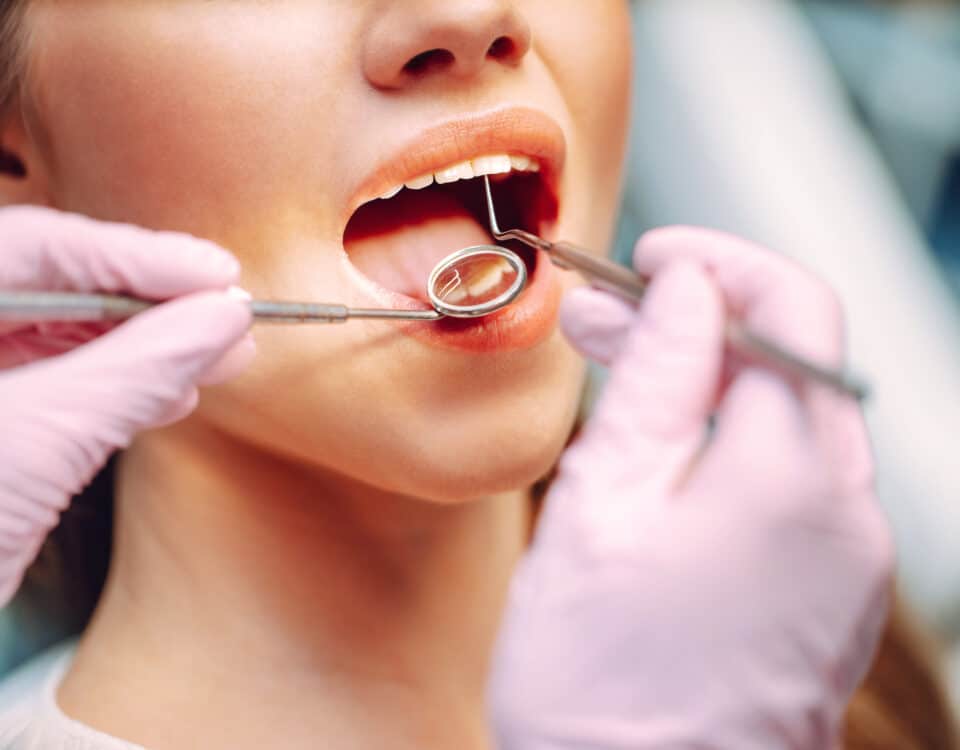Improve Your Sleep in 2020 with Help from Your Dentist
January 16, 2020Tooth Sensitivity: 1 in 8 Americans Have It
January 27, 2020
You may be a star at daily tooth brushing, but are you doing it correctly? Daily brushing, including cleaning between teeth, is vital for removing plaque from dental enamel. When plaque isn’t removed, it builds up and can cause tooth decay and gum disease. Brush your teeth at least twice a day to ensure that toothbrush bristles aren’t worn or frayed. Toothbrushes should also be replaced often to provide the teeth a better clean. Learn other important steps to brushing better in 2020 for a healthier mouth and a brighter smile!
Toothbrushing: Why It’s Important
Did you know that your teeth start to decay as soon as you eat and drink something? That’s all thanks to sugar and bacteria in your mouth. When you eat, sugars in your food and drinks mix with mouth bacteria to create plaque. You don’t often know that this is happening unless you feel your teeth and they seem slimy. That “slimy” feeling is plaque that has attached to the surface of your teeth, which it likes to do. It’s acidic, clear, sticky, and hard to see.
Because sugar and bacteria makes a substance that’s an acid on the teeth, that acid breaks up tooth minerals. This is how decay happens. Over time, plaque and bacteria will work its way farther into a tooth, decaying the surface and creating inner cavities of dead spaces. You can’t see this happening unless extensive decay has taken place, changing the colors of your teeth. A dentist can detect those cavities when they are small and help remove decayed parts of your teeth.
The key is to have great toothbrushing habits already, so that your teeth don’t decay. Once they do, you can’t get those areas of your teeth back. That’s why toothbrushing is so important: it’s your best line of defense against tooth decay and oral health diseases that stem from it. The American Dental Association (the experts on toothbrushing and all things oral health) recommend that you brush your teeth at least twice a day for 2 minutes at a time. Brush after every single meal to remove more of that decay-causing plaque.

How, When, and Proper Technique
There are proper times and techniques for good toothbrushing. First, you want to brush your teeth after meals, as this is when plaque production happens. However, wait 20-30 minutes after eating if you’ve had anything acidic, including citrus fruits, candies, and drinks. You also want to watch out for carbonic acid, which is the substance in sodas and sparkling water that give you those fizzy bubbles. Brushing too soon after these foods will actually strip enamel from your teeth because you have active acid on the enamel.
Always brush your teeth before you go to bed so that you don’t have plaque and bacteria decaying the teeth all night. This will also help with fresher morning breath. When brushing, use toothpaste that has the ADA’s Seal of Acceptance printed on the label. This means that the product has been tested and has been found effective at cleaning the teeth and preventing tooth decay. Other products may not be as safe.
Use a toothbrush that fits the size of your mouth. Infant brush for infants, toddler brush for small children, adult toothbrushes if you’re an adult, and so forth. Choose soft-bristled brushes (which will be printed on the label), so that the bristles aren’t too harsh on sensitive enamel. Using approved toothpaste, wet your toothbrush with water to activate bubbles when brushing. Brush in all different directions on all your tooth surfaces; front-to-back, side-to-side, and especially circular motions. Brush for at least 2 minutes, then rinse well with water. Repeat this as many times during the day as you would like.

Steps for Better Brushing
Here are tips for the brushing process. You’ll see your oral health improve, the amount of cavities you have diminish (or disappear), and much fresher breath:
- Aim the toothbrush at a 45 degree angle towards the gum line.
- Use a pea-sized amount of toothpaste.
- Use a gentle, circular motion when toothbrushing.
- Repeat on the inside surfaces.
- Use a light back and forth motion on the chewing surfaces.
- Spit out toothpaste after brushing. (No need to rinse. A little bit of fluoridated toothpaste in your mouth will continue to protect against tooth decay).
- Replace the brush every 3-4 months.
- Use ADA-approved toothpaste and other products.

Seeing Your Dentist
No oral health care routine is fully complete without visiting your dentist. The ADA recommends visiting your dentist at least twice a year for comprehensive exams and dental cleanings. Poor oral health is linked to diabetes, systemic disorders, high blood pressure, oral cancer, gum and bone disease, deteriorating cardiovascular health and sinus problems.
Comprehensive exams are the best preventative and diagnostic measure for your dental and overall health. By evaluating your teeth, gums, jaw and surrounding areas thoroughly, we reduce your risk for untreated conditions that damage your health.
Your comprehensive exam will examine all your hard surfaces (teeth, jaw) and soft tissues (cheeks, lips, gums, throat) for any abnormalities. We can see the signs of oral health diseases, tooth decay, gum diseases and more then and during your dental cleanings every 6 months. Cleanings remove tobacco, coffee and tea stains for a bright, white smile. They also freshen your breath by eliminating plaque and tartar buildup. Cleanings are the first step to treating preexisting or developing dental conditions. This is a deep toothbrushing, gum cleaning, and fluoride treatment that you can’t get at home.
If you really want to up your game with toothbrushing this year, schedule your comprehensive exam and dental cleaning with our team. Simply call Family & Cosmetic Dentistry of the Rockies at (970) 267-0993!



